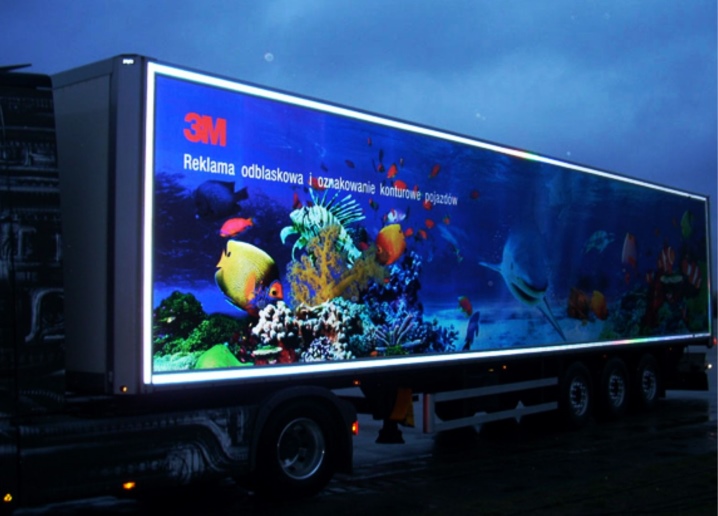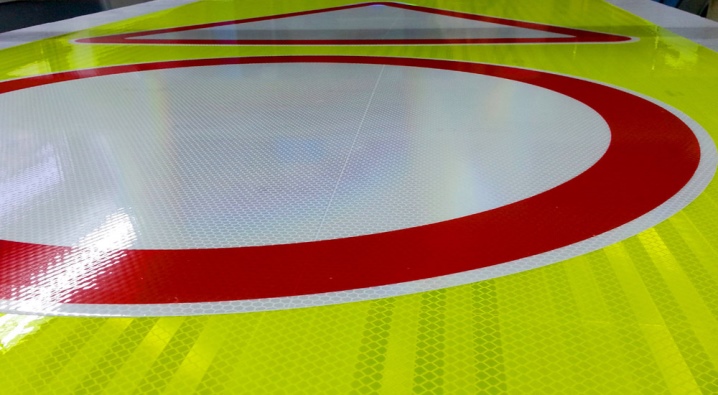All About Reflective Film

Reflective films: self-adhesive reflective, transparent and mirror, black, red, white and in other versions are gaining more and more popularity. If initially this material was used mainly in the production of advertising and information structures, today it is increasingly becoming an interior detail, helping to protect residential and non-residential premises from the active influence of sunlight. It is worth talking in more detail about what kind of reflective film is, about its areas of application and mounting features.


Peculiarities
Film materials are very popular in the advertising field, making it possible to print images of any complexity. But in some cases, they can be used for other purposes. Reflective film is a high-tech product that has a self-adhesive layer that makes it easy to apply to any transparent and solid surface. Such a coating is easily distributed over metal, glass, plastic, holds firmly, is not afraid of exposure to moisture and household chemicals.
The retroreflective effect is achieved through the use of an interlayer of encapsulated glass, presented in the form of tiny balls. They create a catadioptric effect, making it possible not to transmit rays in the UV spectrum, but to reflect them. This coating, when applied correctly, has a long service life and impressive performance. Even when placed outdoors in year-round mode, the film retains its characteristics for up to 5 years in a row.
Its metallized views are more similar in structure to a mirror with an amalgam applied to it. The light-proof layer on the window, balcony glazing, shop window looks opaque from the outside, but does not interfere with the view from the inside of the room.
In addition to privacy, such elements help to provide increased security, serve as decor, complementing the facade of the building.


Applications
Reflective film is widely used in various fields. With its help, images are created on road signs, providing them with better visibility for individual areas at any level of visibility. In addition, such a film is in demand in several areas of activity.
- Auto tuning. Reflective glass elements help to reduce the heating of the passenger compartment on hot days and increase the privacy of personal vehicles. The level of light transmission is today regulated by regulatory documents, but in some cases it is still possible to use such a tuning element.


- Creation of applications. The film lends itself well to cutting and post-printing, with its help they make applications for clothes and shoes, interior items. The variety of color solutions allows you to get a really interesting result.


- UV protection of the glazing. In residential, office, commercial buildings, applying film to windows allows you to adjust the level of light transmission, provides significant savings on air conditioning in the summer. With the help of such stickers, you can protect the space with panoramic glazing from prying eyes and make it more private.


- Advertising. Here, special films are used in the manufacture of inscriptions on billboards and other large-format structures.Since the material lends itself well to printing, you can get a clear picture, logo or letters regardless of the size of the image.


These are the main areas of application for reflective film. But its popularity is growing, new areas are emerging in which this material can be in demand.
Varieties
In reflective film, the classification is largely related to the level of its dimming and the amount of light transmission. Each type has its own characteristics, the prismatic structure also differs from different manufacturers. The base of the reflective film is most often vinyl or alkyd polymers. The most popular options are worth considering in more detail.
- Mirror. A coating specially designed for buildings and other objects with a large glazing area. It is opaque only from one side - the outside. From the inside of the building, the visibility remains complete. This is a popular option for decorating balcony glazing, French windows, terraces of country houses, shops, lobbies in hotels.

- Athermal. A dense vinyl-based transparent film designed to enhance the energy-saving properties of glazing. It is applied to windows in order to reduce heat loss, exclude excessive heating of the air inside a house or apartment. The coating is invisible, transmits light well, but serves as a barrier to various thermal effects.


- Self-adhesive tinting. It is available in a wide range of thicknesses and densities, provides darkening in the room, and helps to reduce the intake of dangerous UV radiation. The level of protection is high - up to 99% filtered, tinting is created both from the outside and from the inside.

- Decorative. Differs in bright colors - in addition to the usual black and transparent, it can be white, red, orange, yellow, blue. Such a coating does not give a darkening effect - the light transmission remains the same. Among the unusual colors, one can single out silver, golden - such elements are used to decorate shop windows and interiors, when decorating decorations.


- Shockproof. Such a film not only possesses reflective properties. When trying to break glass, it acts as a fastening element, making it difficult for intruders to access. This is a good solution for houses and apartments protected by window alarm systems.

- Fluorescent. A specialized film that not only reflects light well, but also gives it off at night. The best option for ensuring good round-the-clock visibility of road and information signs, signs.

- Transport advertising. This option is used to decorate the bodies of automobile and urban transport, has a self-adhesive base. This material is weather-resistant, not afraid of contact with petroleum products and oils, it fits well not only on flat and smooth surfaces, but also on corrugated areas, protrusions, rivets.

- Engineering. This solution is intended for the creation of road and information signs. This material has a highly elastic structure, durable, strong, not afraid of impacts and scratches. Its service life is longer than that of household and commercial counterparts. There is a narrower gradation in terms of the level of retroreflectivity - from standard to very high.

These are the main types of reflective films. In addition, a distinction is made between commercial and household materials. The first ones are more resistant to external influences, have a smooth aesthetic surface, are not afraid of contact with solvents and other types of aggressive chemicals.
How to glue?
It is possible to apply a reflective film to the surface of glass, plastic, metal without long and complicated preparation. Most often, they work independently with it when installed on windows and other facade, interior structures.When gluing, it is important to follow certain rules, the order of actions, otherwise there is a great risk that the material will lie unevenly. In addition, you need to take a responsible approach to the selection of material - a darkening of more than 40% is not recommended for living spaces. Let's look at this process step by step.
- Selection of optimal conditions. Reflective coating should not be applied to wet or cold glass, in extremely low or high humidity. The best time is a dry and rather warm, windless day with average temperatures above +5 degrees.
- Surface preparation. It must be clean - free from dirt, dust, paint residues, sealants and adhesive. Optimally, if it turns out to additionally degrease the material on which the film is applied, this will increase the adhesion (adhesion).
- Preparation of working tools and materials. You need a spray bottle with a non-foaming soap solution, a rubber or plastic spatula, a stationery knife for cutting and trimming the material.
- Measurement. The film is applied to the surface, cutting work is performed, the excess is cut off.
- Application. Soap solution is sprayed from the spray bottle onto the window surface. You need to glue the film from the top corner, preferably on the left, gradually moving downward. All emerging wrinkles and bubbles must be immediately eliminated with a spatula, "expelling" the air outside.
- Leveling. After applying the coating to the entire area of the glass or other surface, it must be carefully smoothed out, moving from the center to the edges. So it will be possible to eliminate minor defects that are not noticeable at first glance.

By carefully performing all the steps, you can easily cope with the application of reflective coatings to windows or other surfaces on your own, without outside help.
It is important to take into account that such a protective coating cannot be removed as easily as ordinary stickers - it adheres very firmly, forming a tight adhesion to the surface. A long-term high-temperature exposure will be required to remove the previously used protective and decorative layer.
How to glue reflective film, see the video.













The comment was sent successfully.